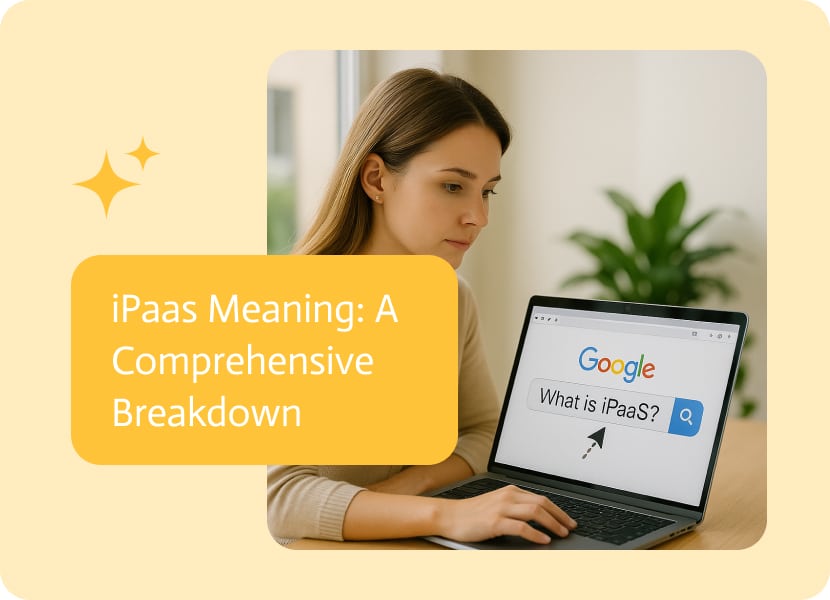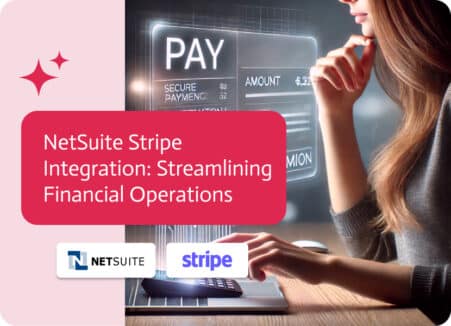

iPaas Meaning: A Comprehensive Breakdown
Nowadays, data and software are everywhere, whether that be in the cloud, on-site, in apps, or even in machines. Businesses have many platforms, APIs, and separate systems to deal with. To prevent this situation from becoming a full-blown IT disaster, there’s iPaaS: Integration Platform as a Service.
You may have heard the term in meetings. But what is iPaaS? Where did it come from? Why is it becoming so popular? And how does it help businesses? Let’s take a closer look.
What iPaaS Is
iPaaS is a cloud platform that helps groups link different software and data sources. It’s like digital glue that connects your customer relationship management (CRM) system to your enterprise resource planning (ERP) system, your customer support system to your billing software, and your analytics dashboard to almost everything else.
iPaaS doesn’t just move data from one place to another. It lets companies create, control, and watch integration processes across cloud and on-site setups. This covers real-time data syncing, automatic actions based on events, and managing complex business tasks through a central platform, often with a simple, visual interface.
The History of iPaaS
iPaaS started in the mid-2000s when cloud software like Salesforce began to gain steam. Back then, connecting cloud apps with on-site systems was tough and often needed custom middleware or lots of coding.
Then came the innovators: Dell Boomi launched AtomSphere around 2007, with a visual interface for creating integrations. Jitterbit changed from on-site middleware to a cloud iPaaS. SnapLogic came out with Snaps, pre-built connectors that changed how platforms communicate.
As software as a service (SaaS) grew and companies began using many specific tools, the need for smooth, scalable, cloud integration grew fast. By the early 2010s, Gartner had named the term iPaaS, and the push to update integration began.
How iPaaS Works
Let’s say you run a business that uses Salesforce for sales, NetSuite for money matters, HubSpot for marketing, and an older on-site warehouse system. These systems don’t automatically talk to each other. That’s where iPaaS comes in.
With iPaaS, you can log into a web dashboard, drag and drop connectors, and design processes like When a lead is marked ‘closed-won’ in Salesforce, the customer info goes to NetSuite, updates the warehouse system, and sends a welcome email through HubSpot.
It’s that simple, with no special code needed (unless you want to get fancy). iPaaS handles the data mapping, security, scheduling, and keeping an eye on things. Many platforms also handle real-time data flow, data changes, API control, and event-based setups.
Why Businesses Use iPaaS
The benefits are clear. First, it’s fast. Traditional integration can take months, but iPaaS can cut that down to days or even hours. Businesses like how flexible it is. You can add new tools, test automations, and change quickly without needing a development team every time.
It also saves money. Instead of hiring developers to create and manage custom scripts, business users can use simple tools to create their own automations. IT teams can then focus on control and planning instead of managing APIs.
Another big plus is visibility and control. With iPaaS, you get central logs, dashboards, error tracking, and security policies across all integrations. It gives a level of order that other integration solutions can’t match.
How iPaaS Is Used
iPaaS can be used in every part of a business, from syncing SaaS tools to automating supply chains.
In marketing and sales, it connects CRMs to email, ad tools, and lead services. In finance, it pulls data from invoicing, billing, and ERP systems into analytics dashboards. HR teams use it to automate new employee processes between HR, payroll, and IT tools.
It’s also key for combining data. Companies that are changing digitally, merging, or moving to the cloud depend on iPaaS to bring data together and keep systems in sync. And with the rise of the Internet of Things (IoT), manufacturers and logistics firms use iPaaS to send data from sensors into monitoring systems and models that guess what will happen.
Challenges To Know
No tech is perfect.
One issue is being stuck with one provider. Some iPaaS platforms use special connectors and data models that can make moving tricky, even if they offer portability and open APIs.
Control is another worry. As more teams use self-service integration tools, groups must create rules about who can create what and how data should flow.
Security and meeting rules also need focus. Any system that moves sensitive data needs strong encryption, access control, and checking features. Most iPaaS platforms offer these, but you still need to set them up right.
The Market in 2025
The iPaaS market is growing fast. Experts think that by 2030, it could be worth over $50 billion. And things are changing quickly.
In 2025, AI is a big change. A key area in the iPaaS market is moving past simple platforms. While those tools reduce the need for coding, some options take it further by making the whole integration process visual and code-free, using pre-built API connectors.
What Makes Noca’s iPaaS Options Different?
The main idea is about using a full library of pre-made, managed API connectors. These connectors aren’t just simple; they understand the objects, data, and logic of the apps they connect to (like Salesforce, SAP, Shopify).
Here’s how Noca’s approach stands out:
- No Code: Unlike others, where you might need to write code for changes, this one is visual. Data mapping, changes, and logic are all done with drag and drop, making it open to more users.
- API-Based: It uses the power of modern APIs, supporting data transfers and real-time automation based on triggers.
- Secure: Since all connectors and processes are managed, there’s a strong layer of control and security. IT can control access, watch data, and apply rules without checking code. This keeps integrations safe and reliable.
The Market Impact
This approach is changing the iPaaS market by pushing citizen integration. By removing the need for code, the platform lets regular users create automations. A 2024 survey showed that 45% of new integrations were being made by non-IT staff, up from 20% just five years before.
There are also more iPaaS platforms specific to industries like healthcare, finance, manufacturing, and law. These offer pre-built processes and ready-to-use integrations.
Another trend is iPaaS built into ERP, CRM, or analytics platforms. This makes integrations smoother and less reliant on other tools.
Business teams can control their data processes more, freeing IT to focus on bigger planning.
Getting Started with iPaaS
First, know what you need to integrate. Are you connecting cloud apps, syncing databases, automating processes, or everything? Know your goals and what systems are involved.
Then, set up how things are controlled. Decide who controls integrations, how they’re watched, and how security is handled.
Pick a platform that fits your setup. Look at connector availability, support for APIs, AI features, cost, and ease of use. Start small, maybe with a CRM and ERP integration, and then grow.
Train your teams and create a culture of change. Good iPaaS setups take time and evolve with your business.
Final Points
iPaaS is a strategic tool. It connects systems, empowers teams, speeds up change, and turns separate systems into organized setups.
As the number of apps, data sources, and customer points grows, iPaaS will become more important. Whether you’re a startup or a large company, integration is key. With iPaaS, it’s achievable.


